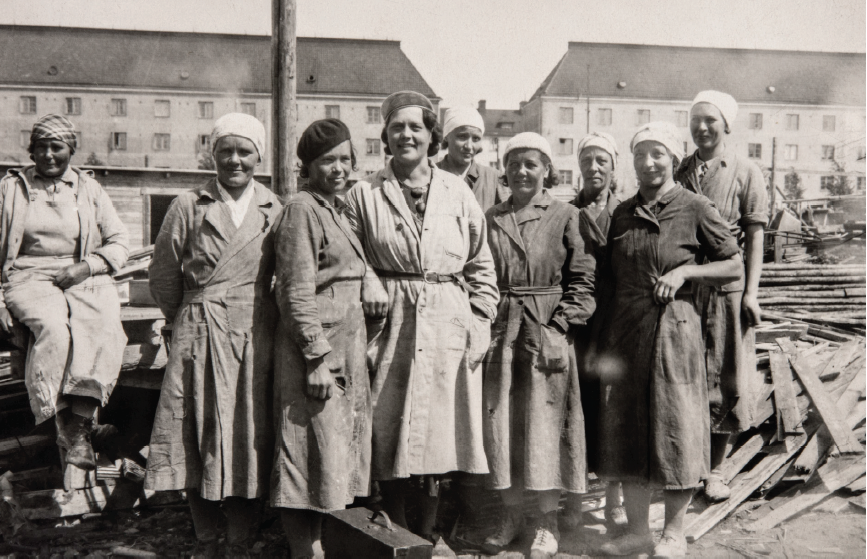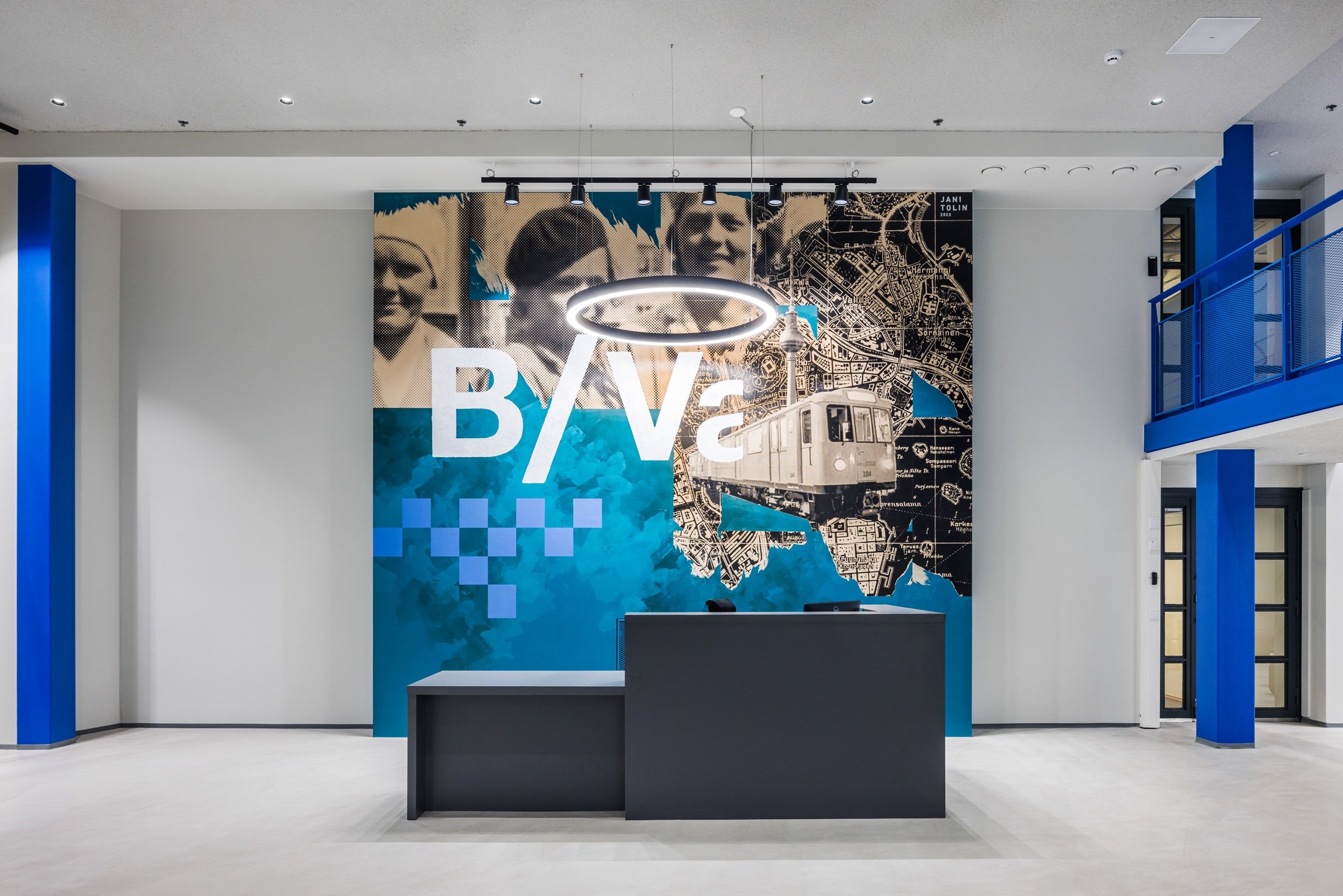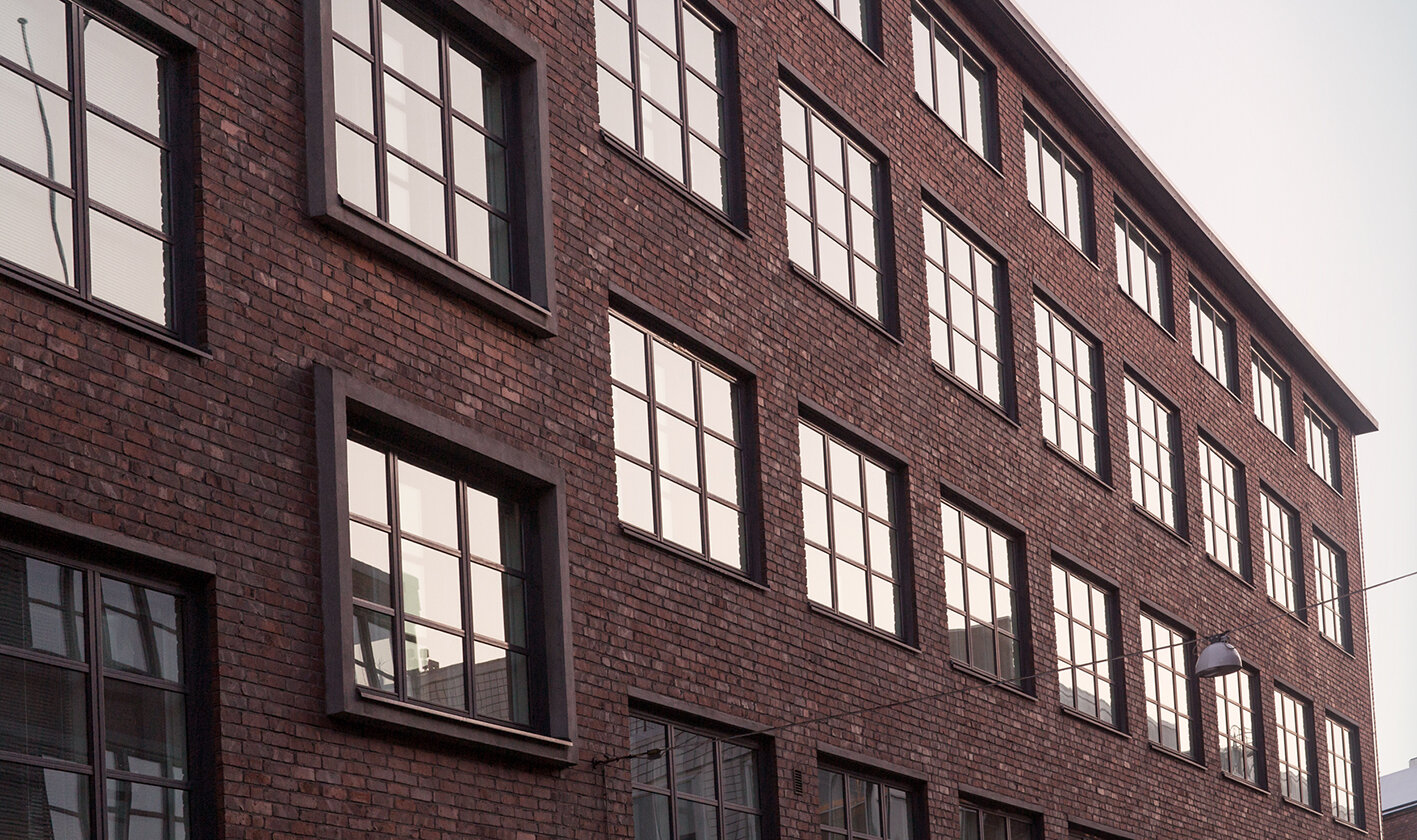
A modern workspace with a concrete history
Back in the early 20th century, Valllila was the industrial center of Helsinki. Today most of the old factories have moved on, making room for new businesses to thrive here. Will yours be next?

Helsingin kaupunginmuseo
Industrial Then, Industrial Now
When you look around Vallila, it’s easy to imagine what this neighbourhood was like in the past. You can almost feel the buzz of the old industrial factory buildings – producing everything from coffee to concrete.
One of those industrial gems was the site of what today is Berlin/Vallila’s Daylight Factory. Built between 1939 and 1945, the factory made the concrete used to build Helsinki’s legendary Olympic Stadium and many other notable sites around the city.
At the turn of the millennium, the site was expanded to make room for one of the Nordics’ biggest telcos. The open, lofty spaces in the Daylight Factory side of Berlin/Vallila have also been used to house parts of Helsinki’s Academy of Fine Arts.
Today, a new industrial revolution is reshaping the entire Vallila area. New businesses in all kinds of industries.


The local community and culture at the core of B/V
Berlin/Vallila hosts pieces from local artists, there to inspire the building’s visitors and celebrate the area’s culture.
The newest addition can be found in the main lobby. Street artist Jani Tolin created a stunning tribute to the building’s history, weaving it together with the story of the new office spaces. Tolin wants to leave space for free association in his work. “Whenever that happens, there’s more room for flow state”.
Hear him talk more about his process in the video!


The creative legacy continues
Elimäenkatu 25-27 was home to the Academy of Fine Arts for years. Before moving out, the academy collaborated with Berlin/Vallila to honor the building’s colorful history. A jury selected a proposal by art student Tommi Pasanen to be executed as a parting gift for future tenants.
Tommi Pasanen’s artwork “Konekimara” celebrates the origins of Elimäenkatu 25. This building first saw the light of day in 1939 as a concrete factory. Tommi found some original product catalogues in the National Archives of Finland and used them and his interest in local history as inspiration.
The painting technique highlights the rough edges of the concrete and reminds of the murals of Keith Haring. Tommi used a mineral-based silicate paint that in itself is related to concrete and it lets the wall underneath breathe.
Tommi feels we should get out of our heads and into our bodies sometimes:
“I really like doing big movements with paint. When you can actually stretch your arm and put the paint on the wall, it’s so physical. You’re doing so much with your body. You see the result immediately.”
We hope this artwork inspires new tenants to continue the creative legacy of this unique place.
Artist Tommi Pasanen

The original outer façade brings depth and tradition. And the interior spaces can be endlessly transformed to meet the needs of today.

Are you ready to leave your mark on history? Get in touch with us and let’s start planning your future at Berlin/Vallila.


